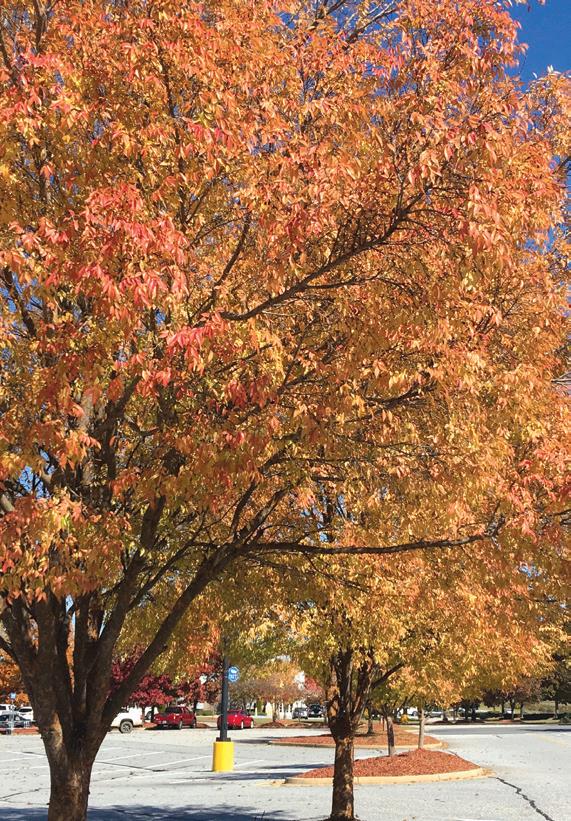
3 minute read
Lacebark elm Offering fall and winter magic
Lacebark elm
Offering fall and winter magic
Advertisement
by Norman Winter, Horticulturist, Author and Speaker
The lacebark elm met Old Man Winter’s confrontation head on and won
this past winter in the Chattahoochee Valley area of West Georgia. While record cold took its toll by freezing leaves to the tree these small elms decorated neighborhoods with soft orange and yellow.
The lacebark elm, Ulmus parvifolia, is from China and Korea. Lest you think badly about bringing in foreign substitutes know that this one is resistant to the Dutch elm disease that wreaked havoc on our native American elm. It is also resistant to Japanese beetles that have become a recent scourge in our area. To be honest, this is one of the most problem-free trees for the landscape. It is also a manageable size that over time can reach 50 feet tall and as wide.
As the leaves fall, they create a yellow carpet that is worthy of a capturing with the camera. This past year - for whatever reason - the bark, which always catches my eye, was even more beautiful. Perhaps the bone chilling 22 degrees had an influence. More than likely it is just me rediscovering their incredible beauty.
The bark is where it beats the hybrid red maples. While it’s called lacebark, which is most appropriate, it would also make the perfect
pattern for a camouflage outfit. The bark exfoliates revealing shades of orange, brown, gray and olive green. Not too many trees can match this one in color and design.
At the Coastal Georgia Botanical Gardens in Savannah GA where it got its start as a USDA Plant Introduction Station, there was an old specimen that had stood the test of time. It was like a living monument to a great and wonderful era of plant exploration.
After a dozen years they are about 20 feet tall and 18 feet wide, offering a perfect size for the urban environment. In the summer their leaves are dark green and handsome leading up to the fall fling. Some trials report that the color on this species is better in the south but certainly this is not a deterrent in its colder zone 5 or protected zone 4 regions.
In the south the Drake is among the most popular varieties as it is considered semievergreen. Northern gardeners instead choose Emerald Isle and Emerald Vase in addition to a new release called Burgundy. The Bosque variety with its straight central-leader would be excellent for parks, street-side and shopping centers.
Once you select the variety for your region choose a site with plenty of sun. The soil should be fertile and well-drained. They are not picky about soil pH which is great for everyone. Even though they are quick to acclimate dig your planting hole two to three times as wide as the root ball. This really allows for the quickest rootexpansion into the adjacent soil. The lacebark is considered a fast grower for a really quality tree.
The winter reveals whether we planned for form and structure in our gardens and the use of bark is important. If we choose the right trees like the lacebark elm, we will realize that even though they are deciduous they will make a dramatic landscape impact.

Looking through the canopy of the lacebark elm reveals wonderful color and structure. In addition to yellow the lacebark may yield a soft orange for fall foliage.

Certiied Tifway bermudagrass available in pallets or mega rolls.



Call now! Darren Emerick 770.530.5078



The contractor’s choice for quality bermudagrass
Customer focused and customer oriented • Farm located minutes from I-75 in Calhoun, Georgia










